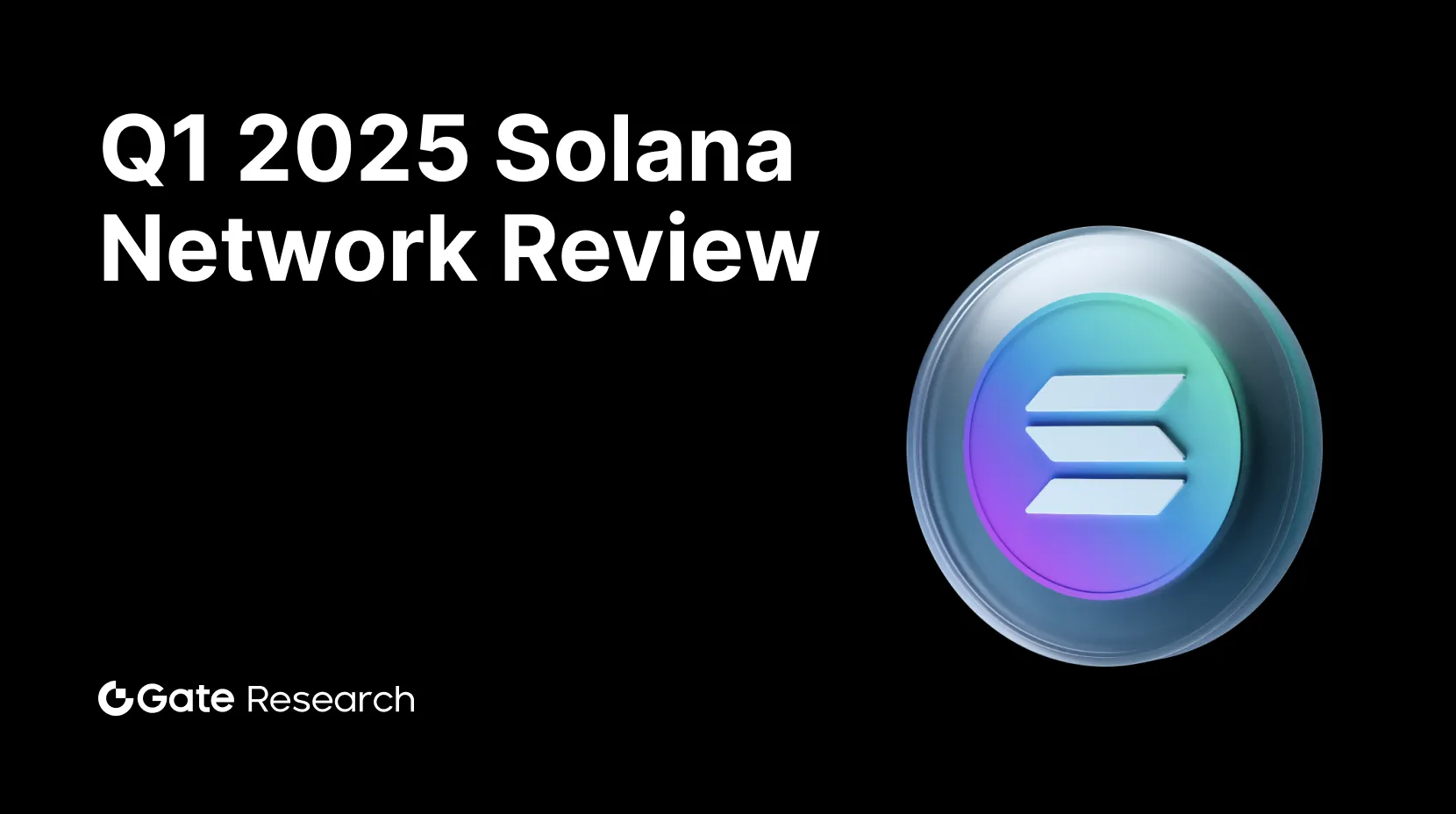Gate Research: Q1 2025 Ethereum Network Review
4/23/2025, 8:23:48 AM
Download the Full Report (PDF)
Gate Research's newly released report, "Q1 2025 Ethereum Network Review," offering a comprehensive analysis of Ethereum's market performance, holder distribution, network activity, on-chain applications, and future outlook for the first quarter of 2025. The report delivers in-depth insights into the overall state of the Ethereum network and its key emerging trends. Abstract
- Amidst cooling market enthusiasm and a more risk-averse sentiment, ETH’s price experienced a significant correction in Q1, with its market capitalization shrinking to approximately $217.3 billion.

- The daily average trading volume for ETH options saw a substantial 34.5% quarter-over-quarter (QoQ) increase to $840 million. However, open interest declined by 6.9% QoQ, indicating a neutral market sentiment.
- ETH spot ETFs experienced continued outflows, reflecting a more conservative investor stance. Notably, Grayscale surpassed BlackRock to become the largest holder of ETH ETF.
- The total number of unique ETH on-chain addresses reached 161 million by March 31, 2025, a growth of approximately 3.54% since the end of January. The ETH holding structure remained dominated by mid-to-large holders, with stable retail participation.
- ETH network active addresses and daily transaction counts remained stable. However, the average gas fee in March saw a significant decrease of over 50%, and only 3,694 ETH were burned (a 61.36% QoQ decrease), indicating a cooling of on-chain activity.

- ETH staking data showed an increase in volume but a decrease in overall value. By March 31st, the total staked ETH reached 27.67 million, a 15.54% QoQ increase.
- Aave became the top Ethereum protocol by TVL, reaching $14.3 billion. Real-World Asset (RWA) and stable yield strategies drove significant QoQ TVL growth for Sky (3.99%) and Ethena (12.24%).
- Major Layer 2 protocols generally experienced a decline in TVL, while emerging protocol Soneium stood out with an impressive 8,622% QoQ TVL growth.
- The market capitalization of stablecoins on Ethereum grew by 11.36% in Q1, maintaining a market share of over 50%. USDC demonstrated strong performance with a 25% surge in Q1, contributing significantly to the overall growth of ETH stablecoins.

- The Ethereum Pectra upgrade, combining execution and consensus layer optimizations, is scheduled for mainnet deployment in Q2 2025. It is expected to bring higher scalability, smart accounts, enhanced staking flexibility, and reduced transaction costs, positioning it as a key catalyst for future innovation and adoption on Ethereum.
(Click below to access the full report)
Gate Research
Gate Research is a comprehensive blockchain and crypto research platform that provides readers with in-depth content, including technical analysis, hot insights, market reviews, industry research, trend forecasts, and macroeconomic policy analysis.
Click the Link to learn more
Author: Ken
Translator: Sonia
Reviewer(s): Wayne、Ember
Translation Reviewer(s): Ashley、Joyce
* The information is not intended to be and does not constitute financial advice or any other recommendation of any sort offered or endorsed by Gate.
* This article may not be reproduced, transmitted or copied without referencing Gate. Contravention is an infringement of Copyright Act and may be subject to legal action.
Related Articles

Intermediate
Gate Research: Q1 BTC Network Review
Gate Research's latest report, "2025 Q1 BTC Network Review," presents a detailed analysis of Bitcoin's market performance, on-chain activity, transaction costs, ecosystem evolution, mining metrics, and technical upgrades in Q1 2025. The report offers key insights into the state and future direction of the Bitcoin network.
4/23/2025, 8:24:22 AM

Intermediate
Gate Research: 2025 Q1 Solana Network Review
This report provides a comprehensive review of Solana’s network performance in Q1 2025. It covers price movements, on-chain activity, the state of smart contracts and staking, growth in stablecoins and decentralized exchanges (DEXs), returns from DePIN, and the cooling of the NFT market. It also examines the implications of the failed inflation governance proposal SIMD-0228 and what it could mean going forward.
4/23/2025, 8:15:48 AM

Advanced
Solana Need L2s And Appchains?
Solana faces both opportunities and challenges in its development. Recently, severe network congestion has led to a high transaction failure rate and increased fees. Consequently, some have suggested using Layer 2 and appchain technologies to address this issue. This article explores the feasibility of this strategy.
6/24/2024, 1:39:17 AM

Beginner
The Future of Cross-Chain Bridges: Full-Chain Interoperability Becomes Inevitable, Liquidity Bridges Will Decline
This article explores the development trends, applications, and prospects of cross-chain bridges.
12/27/2023, 7:44:05 AM

Intermediate
Sui: How are users leveraging its speed, security, & scalability?
Sui is a PoS L1 blockchain with a novel architecture whose object-centric model enables parallelization of transactions through verifier level scaling. In this research paper the unique features of the Sui blockchain will be introduced, the economic prospects of SUI tokens will be presented, and it will be explained how investors can learn about which dApps are driving the use of the chain through the Sui application campaign.
6/13/2024, 8:23:51 AM

Advanced
Navigating the Zero Knowledge Landscape
This article introduces the technical principles, framework, and applications of Zero-Knowledge (ZK) technology, covering aspects from privacy, identity (ID), decentralized exchanges (DEX), to oracles.
1/4/2024, 4:01:13 PM
Start Now
Sign up and get a
$100
Voucher!